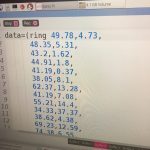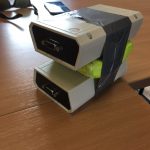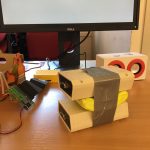The Project:
We are excited to announce our involvement in the Cornwall Space Sector, an active innovator on a global scale, and a key player in the local and national space economy.
Mayes Creative is setting foot in the Cornwall Space Industry through the development of Mayes Creative Tech, a spin-off that will develop Cosmic Ray Detectors and gather data for commercial use. This project is being led by Dr. Joanna Mayes, founder of Mayes Creative with previous experience in IT and education, and Carolyn Kennet, director at Mayes Creative, with close ties and connections within the UK Astronomy sector. The project is supported by Avanti at Goonhilly Earth Station, the Satellite Applications Catapult through the University of Exeter, and SpaceTech Cornwall.
Cosmic Ray Detectors and their relevance Cosmic Ray detectors are tools designed to detect high energy particles coming from space: Cosmic Rays. Detectors can help us track the directionality of cosmic rays, providing reliable data about the impact of Cosmic Rays from the ground.
At a point in time when cosmic ray activity is rising year on year, alongside plans for increased space travel and our greater dependence on satellite communications, cosmic ray data is vital. The uses of this information can, however, stem from science to cinema and performance.
We are excited to announce our involvement in the Cornwall Space Sector, an active innovator on a global scale, and a key player in the local and national space economy.
Mayes Creative is setting foot in the Cornwall Space Industry through the development of Mayes Creative Tech, a spin-off that will develop Cosmic Ray Detectors and gather data for commercial use. This project is being led by Dr. Joanna Mayes, founder of Mayes Creative with previous experience in IT and education, and Carolyn Kennet, director at Mayes Creative, with close ties and connections within the UK Astronomy sector. The project is supported by Avanti at Goonhilly Earth Station, the Satellite Applications Catapult through the University of Exeter, and SpaceTech Cornwall.
Cosmic Ray Detectors and their relevance Cosmic Ray detectors are tools designed to detect high energy particles coming from space: Cosmic Rays. Detectors can help us track the directionality of cosmic rays, providing reliable data about the impact of Cosmic Rays from the ground.
At a point in time when cosmic ray activity is rising year on year, alongside plans for increased space travel and our greater dependence on satellite communications, cosmic ray data is vital. The uses of this information can, however, stem from science to cinema and performance.
Our plan:
We aim to create a strategically placed array of Cosmic Ray Detectors in Cornwall to gather data on Cosmic Rays at a ground level efficiently, for use both
in creative engagement and enterprise.
This project combines our traditional approach to creative engagement and brings in the principles of Inspiration, Research, Innovation, and Participation that we apply to our events, activities, and experiences and combines them with an entrepreneurial focus.
The Cosmic Ray Detection Project follows a three-stage process:
We aim to create a strategically placed array of Cosmic Ray Detectors in Cornwall to gather data on Cosmic Rays at a ground level efficiently, for use both
in creative engagement and enterprise.
This project combines our traditional approach to creative engagement and brings in the principles of Inspiration, Research, Innovation, and Participation that we apply to our events, activities, and experiences and combines them with an entrepreneurial focus.
The Cosmic Ray Detection Project follows a three-stage process:
- Setting up the Array: We are planning on building detectors and distributing them to strategic locations locally, nationally, and internationally, to ensure a broad and accurate detection of cosmic rays. The array will be composed of smaller detectors aimed at both outreach and enterprise, with different functions based on their use.
- Gathering Data: The data we are gathering comes primarily from Cosmic Rays of Solar origin. This year we find ourselves at the beginning of the 25th Solar Cycle, lasting around 11 years, where, as the solar cycle gets underway, we should see an increase in cosmic ray detection, therefore leading to a greater pool of data to be gathered.
- Using Data At Mayes Creative, we have been using Cosmic Ray data for a variety of our events and community experiences. Their uses have ranged from performance intervention to controlling some of our films. Now, we are shifting our approach towards enterprise as well as Creative Engagement, to leverage the commercial opportunity of this raw data, and contribute to our aim of financial sustainability.










